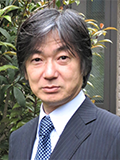Toshiyuki Hibiya

Commendation
For innovative contributions to understanding the mechanisms behind the formation of mixing hotspots in the deep ocean and their global intensity distribution, achieved through a combined theoretical and observational approach
A list of five major papers
- Hibiya, T. (1986), Generation mechanism of internal waves by tidal flow over a sill, Journal of Geophysical Research, 91(C6), 7697-7708
- Niwa, Y. and T. Hibiya (2001), Numerical study of the spatial distribution of the M2 internal tide in the Pacific Ocean, Journal of Geophysical Research, 106(C10), 22441-22449
- Hibiya, T., M. Nagasawa and Y. Niwa (2002), Nonlinear energy transfer within the oceanic internal wave spectrum at mid and high latitudes, Journal of Geophysical Research, 107(C11), 3207
- Hibiya, T. and M. Nagasawa (2004), Latitudinal dependence of diapycnal diffusivity in the thermocline estimated using a finescale parameterization, Geophysical Research Letters, 31(1), L01301
- Hibiya, T., M. Nagasawa and Y. Niwa (2006), Global mapping of diapycnal diffusivity in the deep ocean based on the results of expendable current profiler (XCP) surveys, Geophysical Research Letters, 33(3), L03611
Major achievements
Deep ocean mixing is a key process that controls global overturning circulation, which in turn significantly impacts long-term climate. Dr. Hibiya has, for the first time in the world, uncovered the true nature of deep ocean mixing by combining theoretical predictions with field observations. First, through numerical experiments, he identified latitudinally dependent nonlinear processes that transfer energy from internal tidal waves generated over prominent ridges and seamounts into deep ocean mixing, which he later validated with field observation data. He also demonstrated the importance of benthic mixing hotspots driven by internal lee waves over rough seafloor topography, proposing that this mechanism could help resolve the long-standing “Missing Mixing” issue in physical oceanography. Based on these theoretical and observational findings, he developed a parameterization method to create a global map of diapycnal diffusivities in the deep ocean, paving the way for advancements in global overturning circulation models and climate change predictions. Furthermore, through his involvement in both domestic and international scientific committees, Dr. Hibiya has made significant contributions to the promotion of interdisciplinary and international research.
[ ORCiD ]
[ CV of Prof./Dr.Toshiyuki Hibiya ]
Nominator
Yukio Masumoto
Supporters
Chris Garrett, Toshio Yamagata, Ichiro Yasuda
